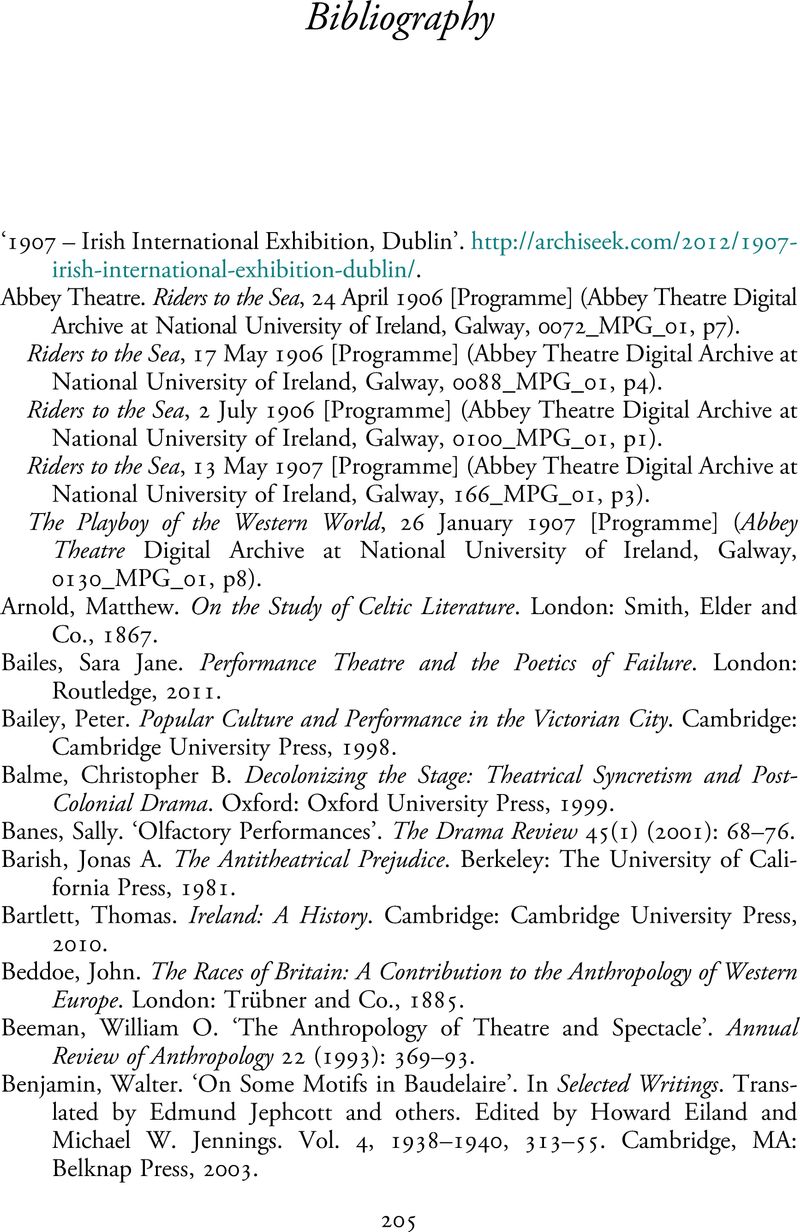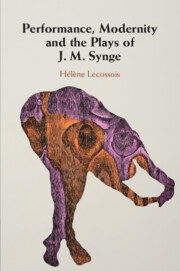Book contents
- Performance, Modernity and the Plays of J. M. Synge
- Performance, Modernity and the Plays of J. M. Synge
- Copyright page
- Epigraph
- Contents
- Figures
- Acknowledgements
- Abbreviations
- Introduction
- Chapter 1 Staging Authenticity
- Chapter 2 The Spectacle of Modernity
- Chapter 3 Performing the Repertoire
- Chapter 4 ‘Queer Bodies’
- Chapter 5 Unresolved Temporalities
- Chapter 6 Creative Failures
- Conclusion
- Bibliography
- Index
- References
Bibliography
Published online by Cambridge University Press: 09 November 2020
- Performance, Modernity and the Plays of J. M. Synge
- Performance, Modernity and the Plays of J. M. Synge
- Copyright page
- Epigraph
- Contents
- Figures
- Acknowledgements
- Abbreviations
- Introduction
- Chapter 1 Staging Authenticity
- Chapter 2 The Spectacle of Modernity
- Chapter 3 Performing the Repertoire
- Chapter 4 ‘Queer Bodies’
- Chapter 5 Unresolved Temporalities
- Chapter 6 Creative Failures
- Conclusion
- Bibliography
- Index
- References
Summary

- Type
- Chapter
- Information
- Performance, Modernity and the Plays of J. M. Synge , pp. 205 - 217Publisher: Cambridge University PressPrint publication year: 2020

